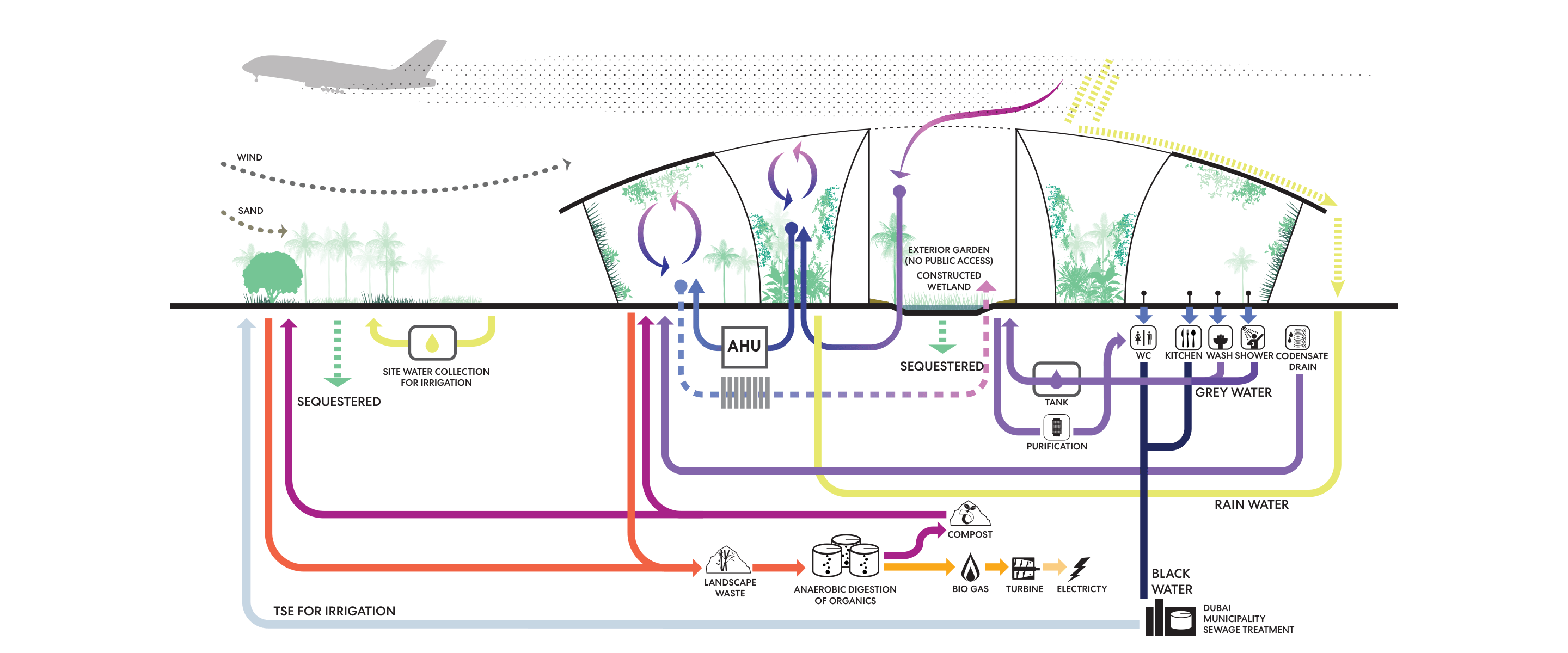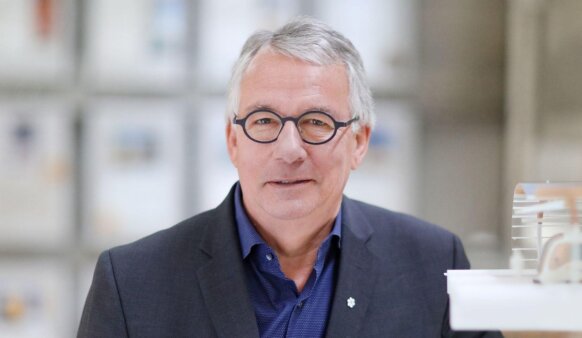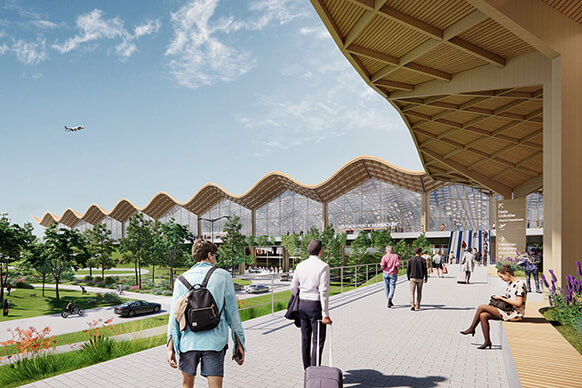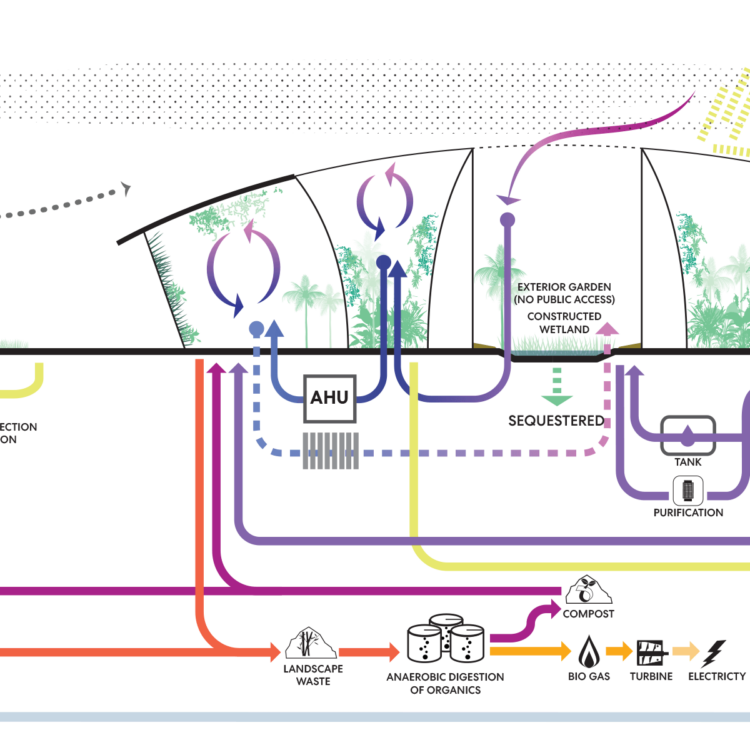
Al Maktoum International Airport Sustainability Master Plan Report
The Sustainability Master Plan Report we produced for Al Maktoum International Airport (AMI) in Dubai sets forth a vision, strategies, and guidelines for developing the world’s largest airport as a paragon of regenerative design.
Regenerative design looks beyond the boundaries of a building and its site to understand how they can be fit into their larger context so that the outputs of one serve as inputs of others in a mutually supportive way. The goal is creating projects that have a symbiotic relationship to their locales and serve as catalysts for improving human life and restoring natural environments. We aligned AMI’s sustainability strategies with Dubai’s ambitious plans for conserving water and reducing waste, as well as its aspiration to develop alternative energy sources and cut greenhouse gas emissions, envisioning the airport and the city as part of the same reciprocal system.
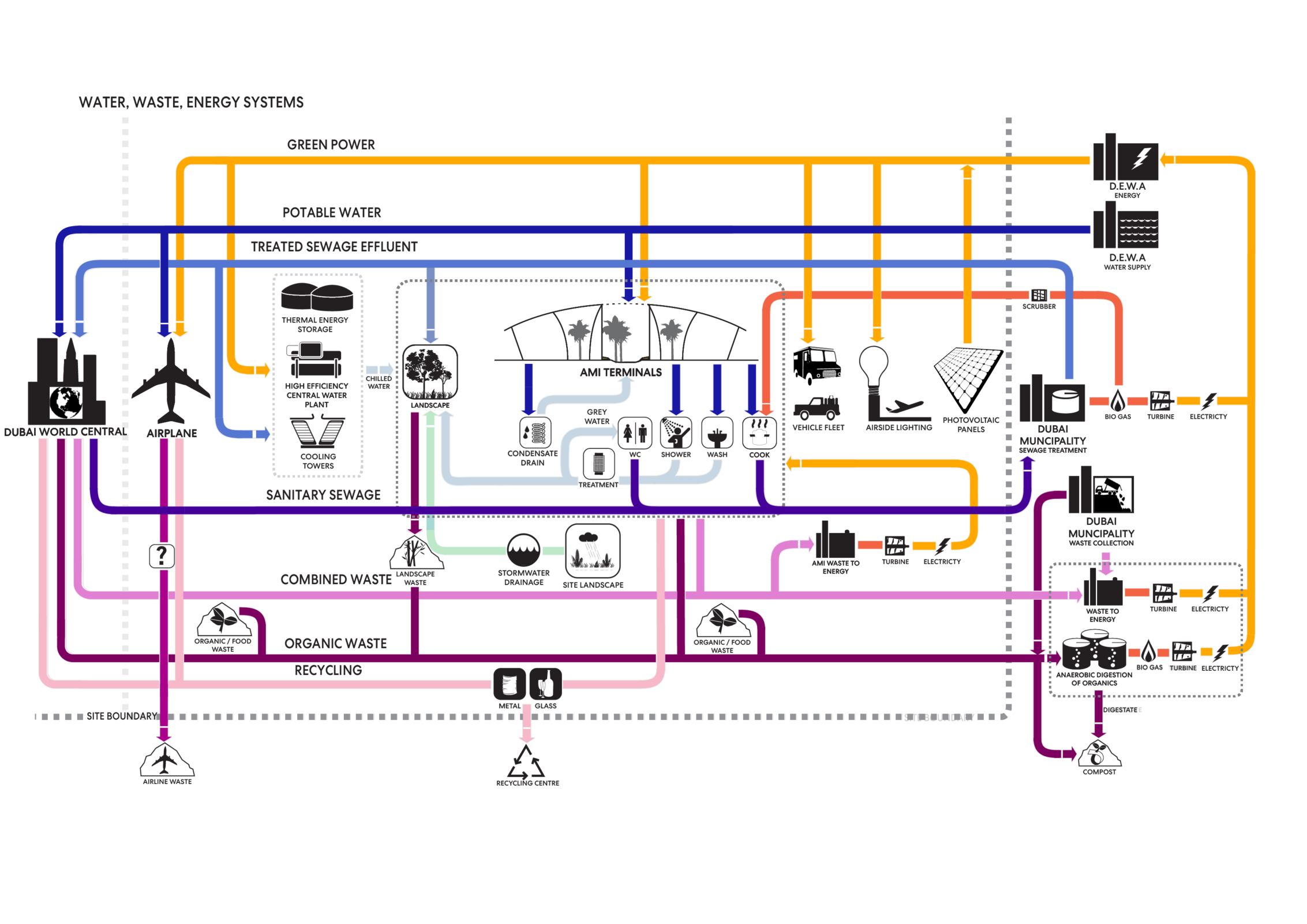
A truly carbon net-zero airport is currently unattainable, as today’s passenger aircraft still burn fossil fuels during takeoff and landing. However, according to our calculations, the approach outlined in the AMI report results in net-zero greenhouse gas emissions from construction and operation while producing all of the required energy from renewable sources. The report also details strategies for sending no waste to the landfill, significantly reducing potable water usage, and how the project might care for the health of its users and the biodiversity of the surrounding environment.
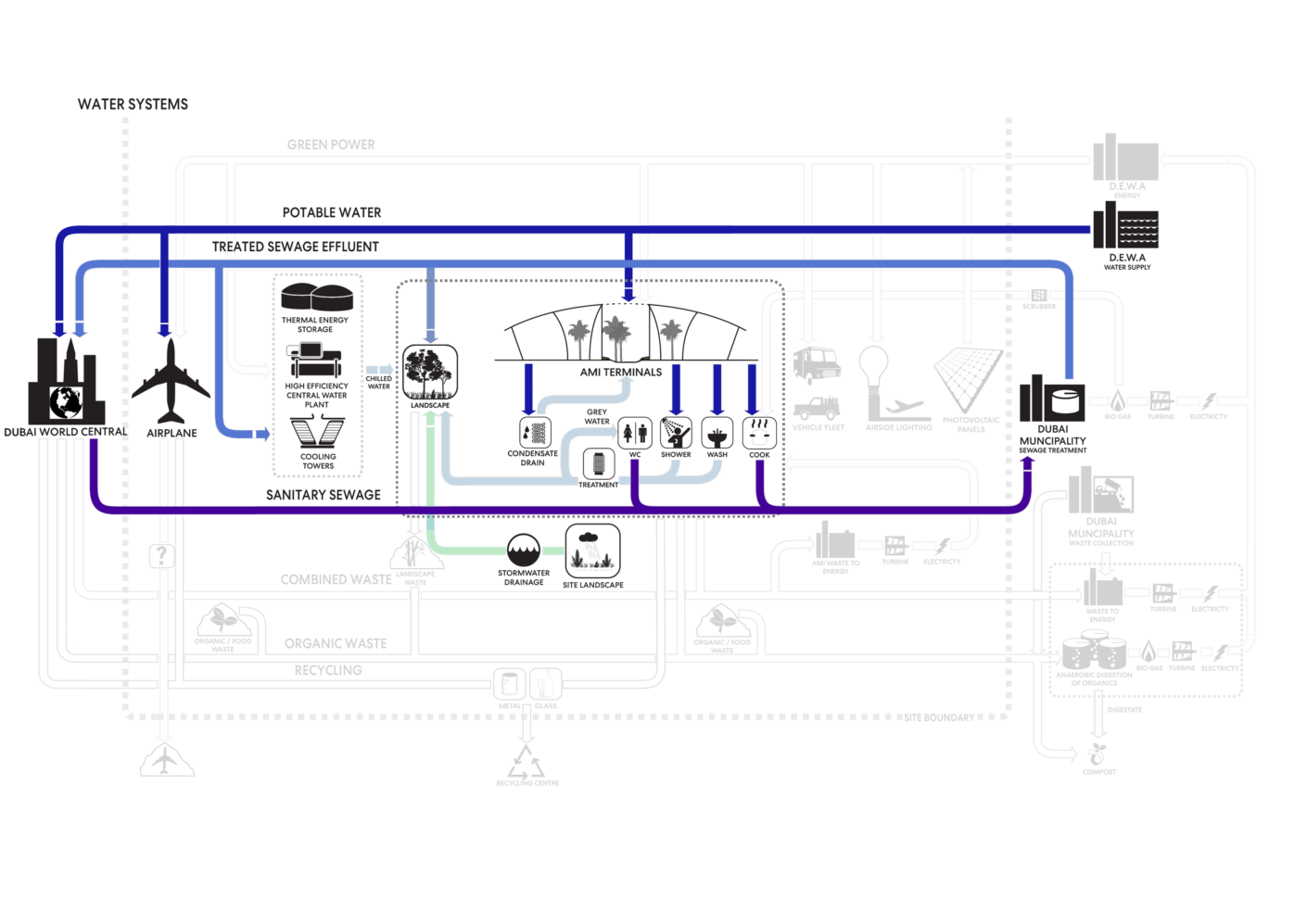
Given the desert context and growing demand, minimizing the use of potable water was an essential aspect of ensuring the long-term viability of AMI’s operations. Our approach suggests a variety of reduction strategies with the harvesting of alternative water sources for non-potable uses. Efficient appliances in the kitchens and low-flow fixtures and vacuum toilets in the washrooms could be combined with greywater harvesting and treatment, cooling tower condensate collection, bioswales, and other liquid reclamation measures for a total potable water reduction of 64%.
The goal of sending zero waste to the landfill led us to identify strong synergies between waste management, energy, and greenhouse gas emission targets. For example, AMI could implement a recycling program that aligns with Dubai’s, while directing organic waste from the airport and municipal streams to anaerobic digesters and other regional waste-to-energy generation plants. We also developed guidelines that divert construction debris from the landfill back to the manufacturing process, reuse building materials and products, and minimize the environmental impact of construction.
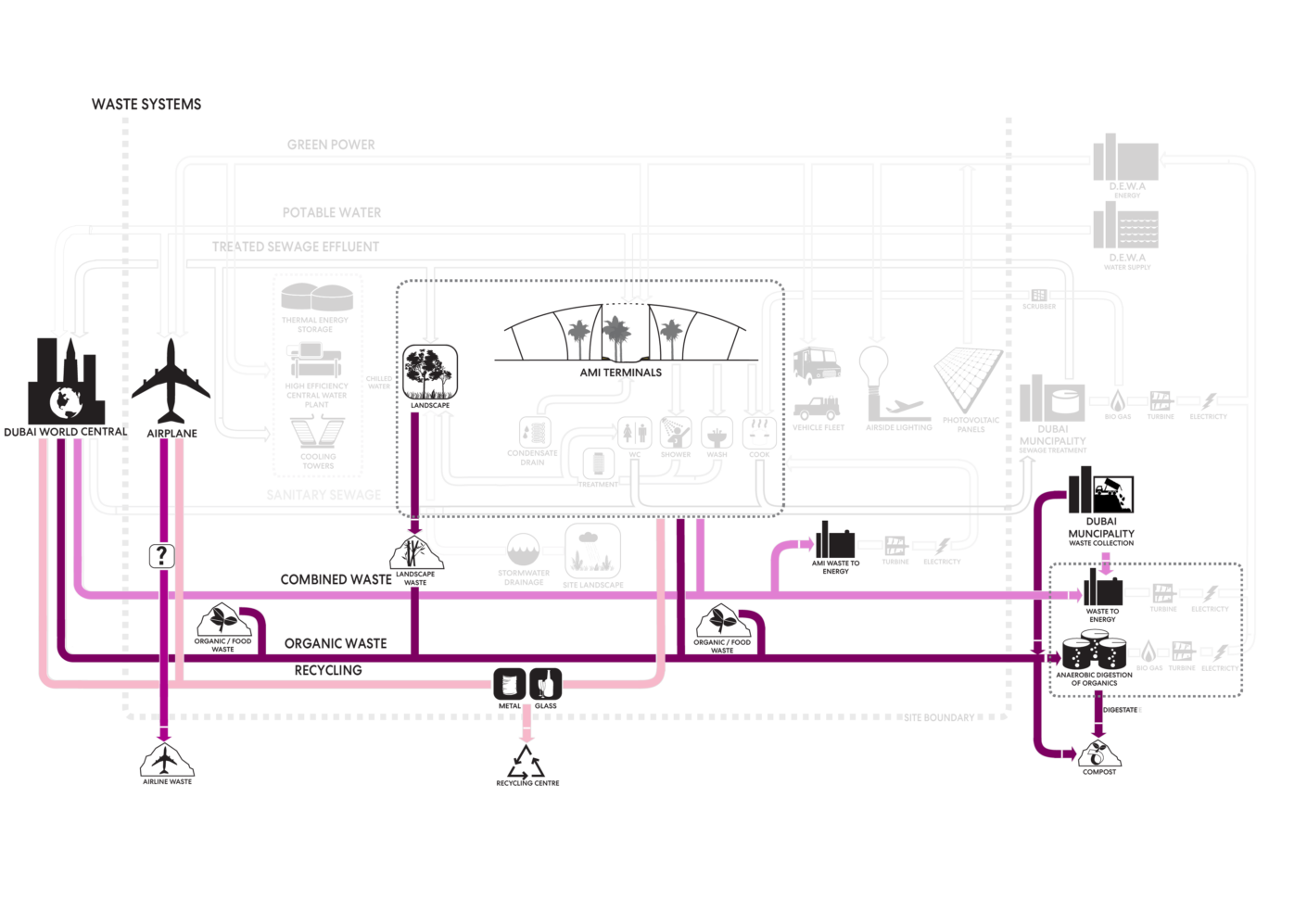
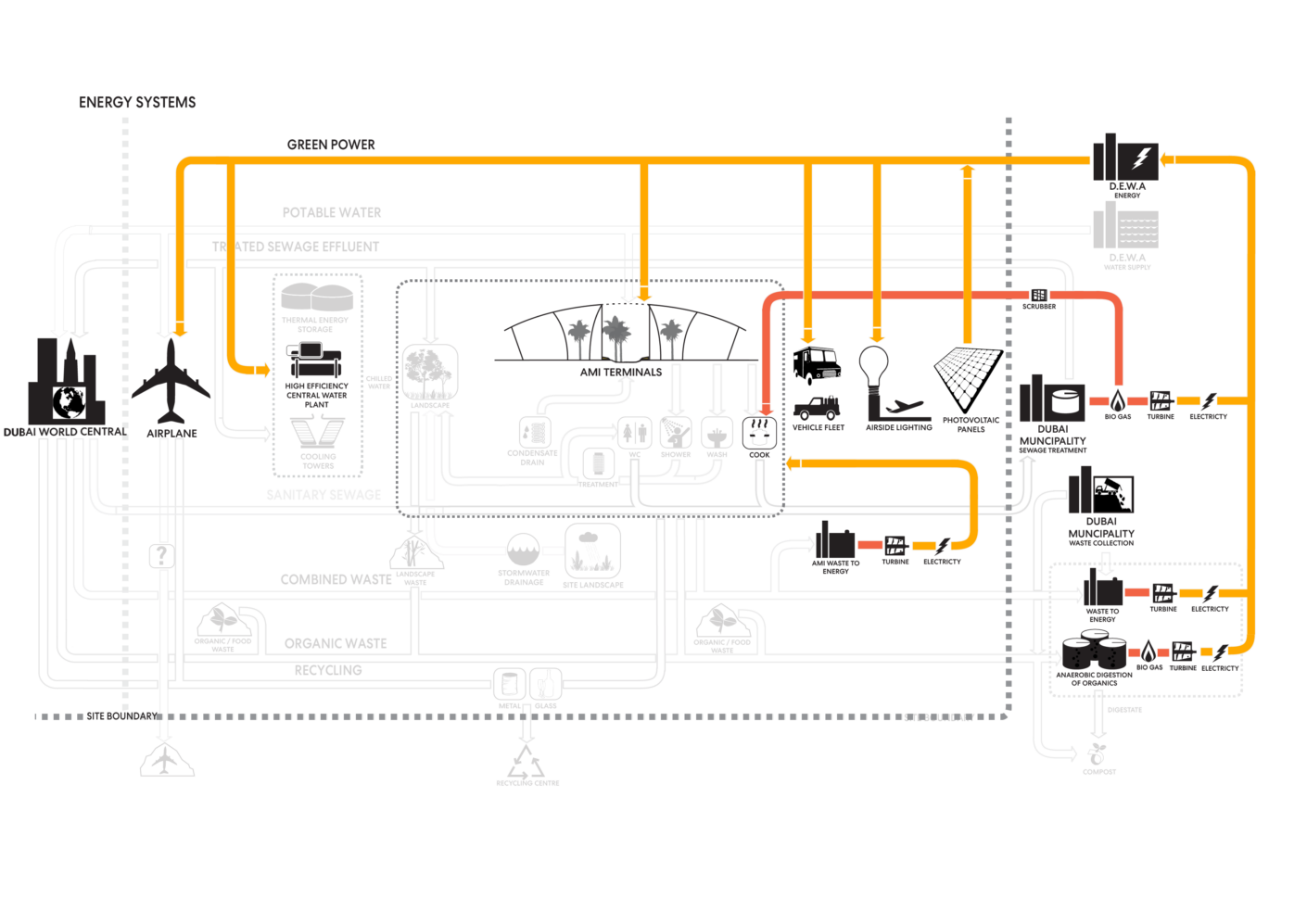
Airports require a lot of energy in general and conditioning them for passenger comfort in the Middle Eastern climate makes usage particularly high. To achieve the target of net-zero conventional energy at AMI, we recommended a multi-tiered strategy that combines an optimized building enclosure with high-efficiency HVAC systems and a mix of onsite and offsite alternative energy sources.
The building enclosure employs overhangs and shading louvers that reduce heat loading with highly insulated structurally glazed walls and light shelves that bounce indirect daylight deep into the space. The HVAC systems include on-demand displacement ventilation equipped with sensors that adjust cooling rates to occupancy and chilled water pipes that run through the concrete slabs.
Energy is generated onsite via photovoltaic panels on the roof. An off-site PV array would also be necessary to meet demand, and anaerobic digesters and other waste-to-energy sources could also be factored into achieving the net-zero target.
This energy strategy directly relates to AMI’s quest for cutting carbon emissions, but our report goes beyond operating loads. We accounted for the embodied carbon of the building materials themselves, specifying low-carbon products and recommending carbon sequestration strategies. We also considered the aircraft in our calculations up to 3,000 feet, figuring in approach, taxi, take-off, and climb out, while tracking the airline industry’s own carbon reduction strategies. And we specified electrified ground service equipment as well as mass transit for ground access to the airport.
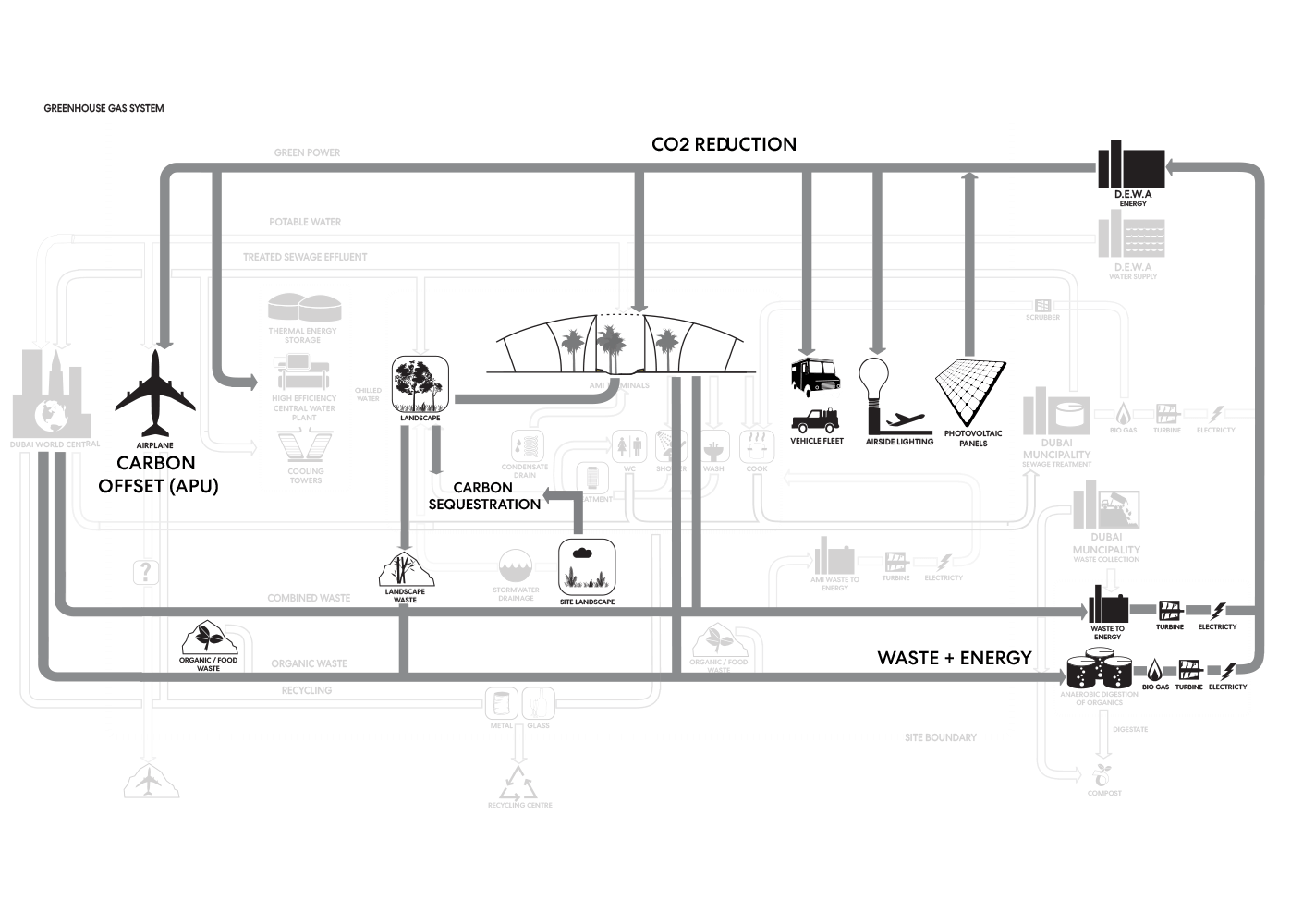
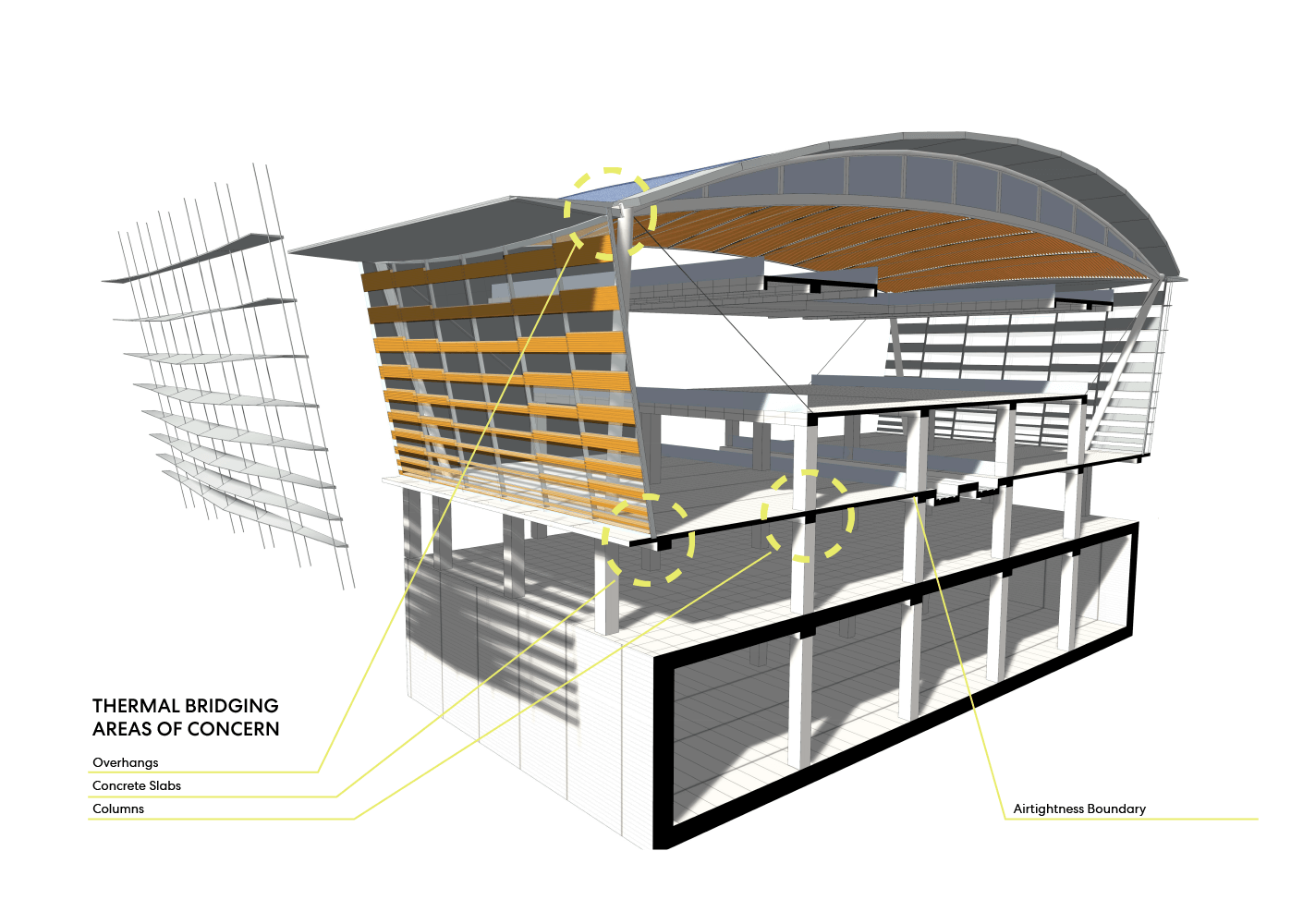
Supporting biodiversity and human health were also central to AMI’s agenda and the measures included in the report address both goals as well as feeding into other systems. For example, a constructed wetland in the airport filters stormwater for non-potable uses while providing habitat for wildlife and soothing views of nature to human passengers. The plantings and landscaping, along with other strategies, also reduce noise and air pollution, both in the airport and for surrounding communities, showing the power of regenerative design to have positive effects beyond the boundaries of any given site.
“The ambition of Al Maktoum International Airport was to implement a whole systems design approach, a strategy that is essential to execute the development of the world’s largest airport in a desert context,” says Perkins&Will design principal Peter Busby. “The approach requires a thorough understanding of the relationship between place and program, as well as between environment and resource as they relate to water, waste, energy, and carbon. The project optimizes natural resources, creates healthy and vibrant indoor environments, and is sensitive to its natural environment.”
